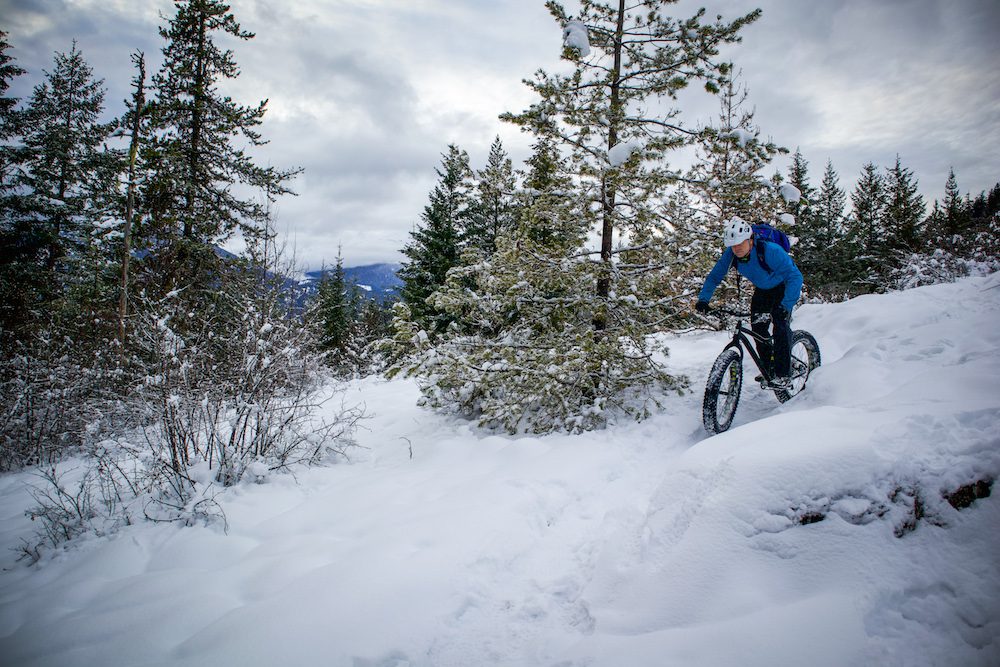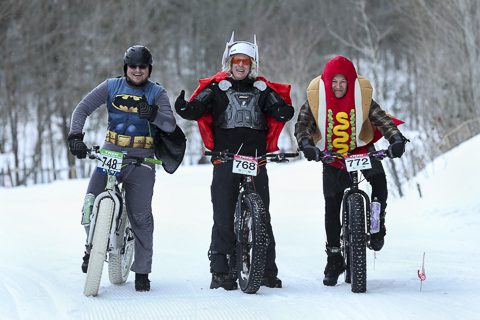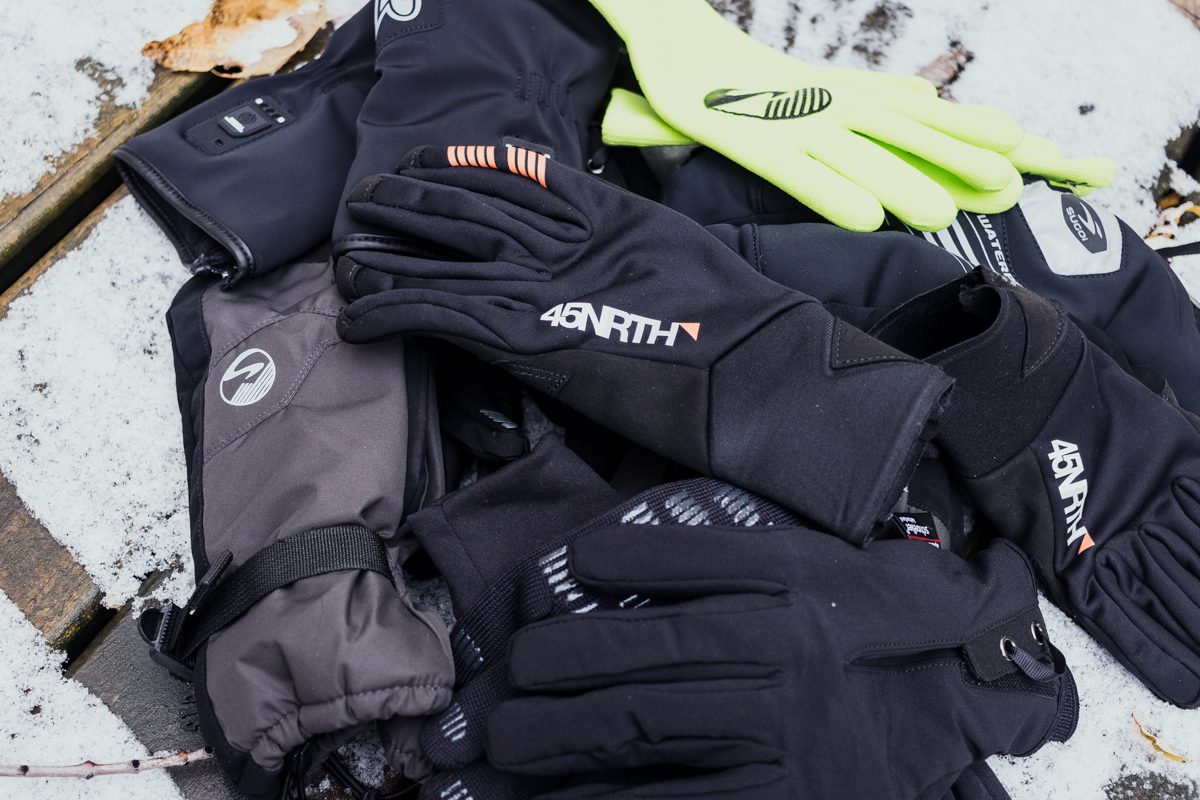Fat biking: What to wear to stay warm (but not too warm)
Stay comfortable so you can enjoy your snowy adventure!
 Photo by:
Rhonda Brett
Photo by:
Rhonda Brett
Fat biking is a great way to get outside on two wheels in winter. As a snow-based sport, it can also be cold. With the right clothing, though, you can stay warm and have fun even on the coldest days.
Here’s our key tips to staying warm when the snow is falling.

Layers are key
Winter weather can change rapidly. There’s also a huge difference in how warm you are while working hard to slowly climb a hill vs bombing back down the other side. This makes proper layering important to staying warm on the bike.
Luckily, you don’t need any special layers for winter. You just need to use them in the right combinations. If you’re looking for the perfect, minimal layers, merino wool is great at being warm when you need it and cool when you don’t. But, as long as you avoid cotton, you should be able to find something in what you already own that will work for you.
RELATED: Dressing for winter cycling with gear you already have at home
Windproof
Nothing cuts through warmth like a cold wind, especially when you’ve already worked up a sweat. A good windproof layer goes a long way to staying warm on the bike. It can also help you reduce the number of layers needed to stay warm.
On warmer days, or when heavy snow is falling, waterproof layers can be important too. Getting wet is never a good idea, whether thats sweat or outside moisture.

Coverage vs. ventilation
On really cold or windy days, making sure there’s no way for wind to get under your layers can be crucial. Luckily, we’ve all gotten really good at covering our faces in the last year. A buff, scarf or anything else that will prevent wind from rushing into your face and down your jacket will help. Adding bike or ski goggles can help keep your face warm, too.
RELATED: Why you need ski goggles for your winter rides
On warmer days, staying a comfortable temperature is a balancing act. Letting some air in/out helps prevent sweating, letting too much cool in will cause chills. Jackets with pit zippers or other ventilation can help you regulate your temperature more effectively.

Extremities are essential
While your legs and core are working hard, and are relatively easy to keep warm, feet and fingers are a whole different game. Warm gloves can make the coldest days comfortable. Some fat bikers even use bar mitts to stay warm. Normal mittens don’t work but two finger gloves – or lobster gloves – add warmth while letting you control the brakes and hold the bars at the same time.
For feet, a good pair of boots, or shoe covers is key. Cleats can let the cold in through the metal plate in a clipless shoe’s sole, so some riders prefer flat pedals in the winter. No matter what, you want to keep your feet dry!
RELATED: How to winterize your bike to keep riding in -40C
Flailing for blood flow
If your fingers do get cold, there’s few ways you can warm them up without having to remove your gloves. If you’ve ever watched a cold cyclocross race and seen riders flinging their arms around – usually on a straighter section of tarmac – that’s exactly what they’re trying to do. Swinging your arms forces blood back towards the fingertips, which helps keep them warm.
You don’t have to flail fast – the key is big movements. Start with your hands way above your head and swing them all the way down to your toes. Alternatively, there’s “the penguin.” Keeping your hands by your side, with your fingers pointed away from your body, repeat an exaggerated shoulder shrug until your fingers regain feeling. I’ve never been able to get this to work, myself, but others swear by it.
Leg swings work roughly the same way. Just use your bike or a tree to keep balance. Jumping jacks work as a full-body warm up. Or, if all else fails, just dance! Getting moving is the key!
